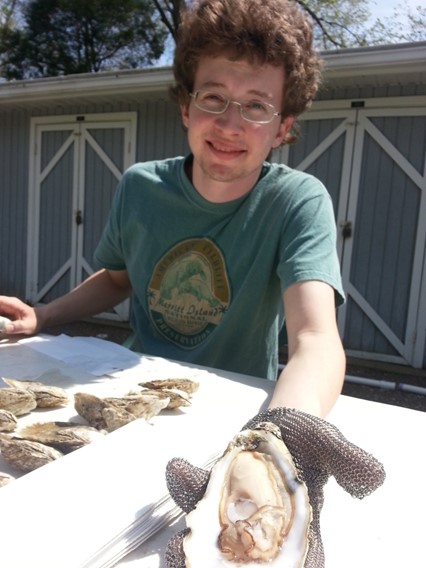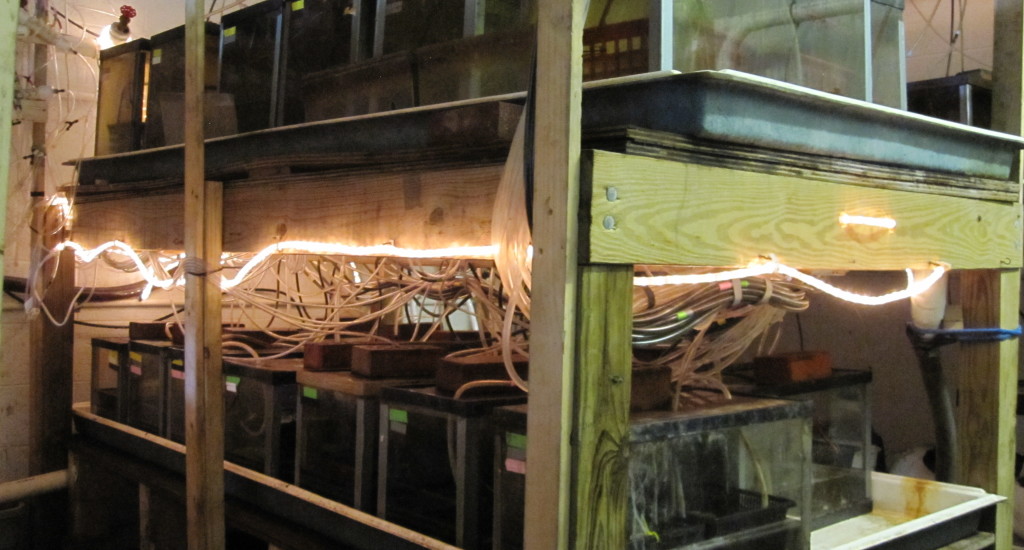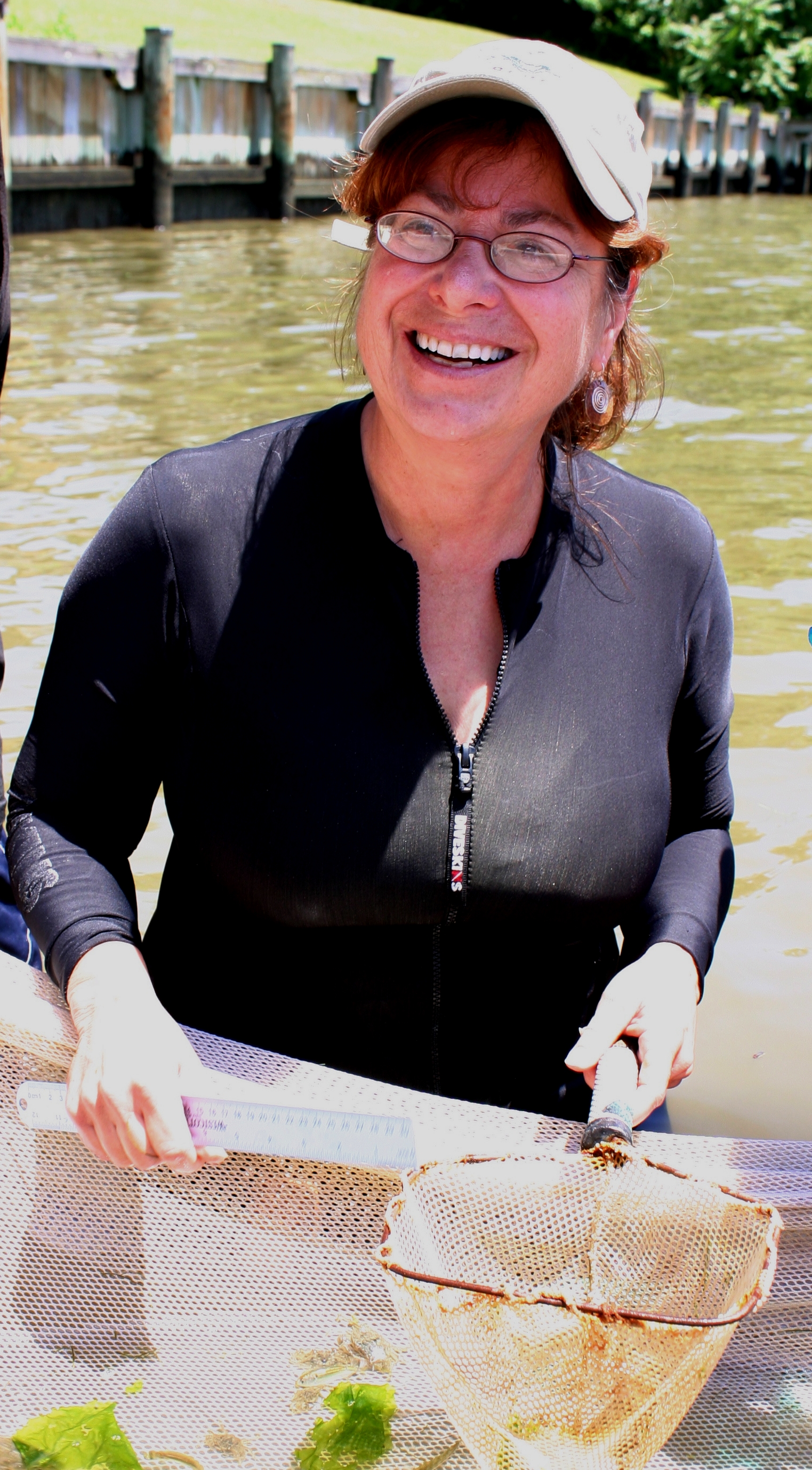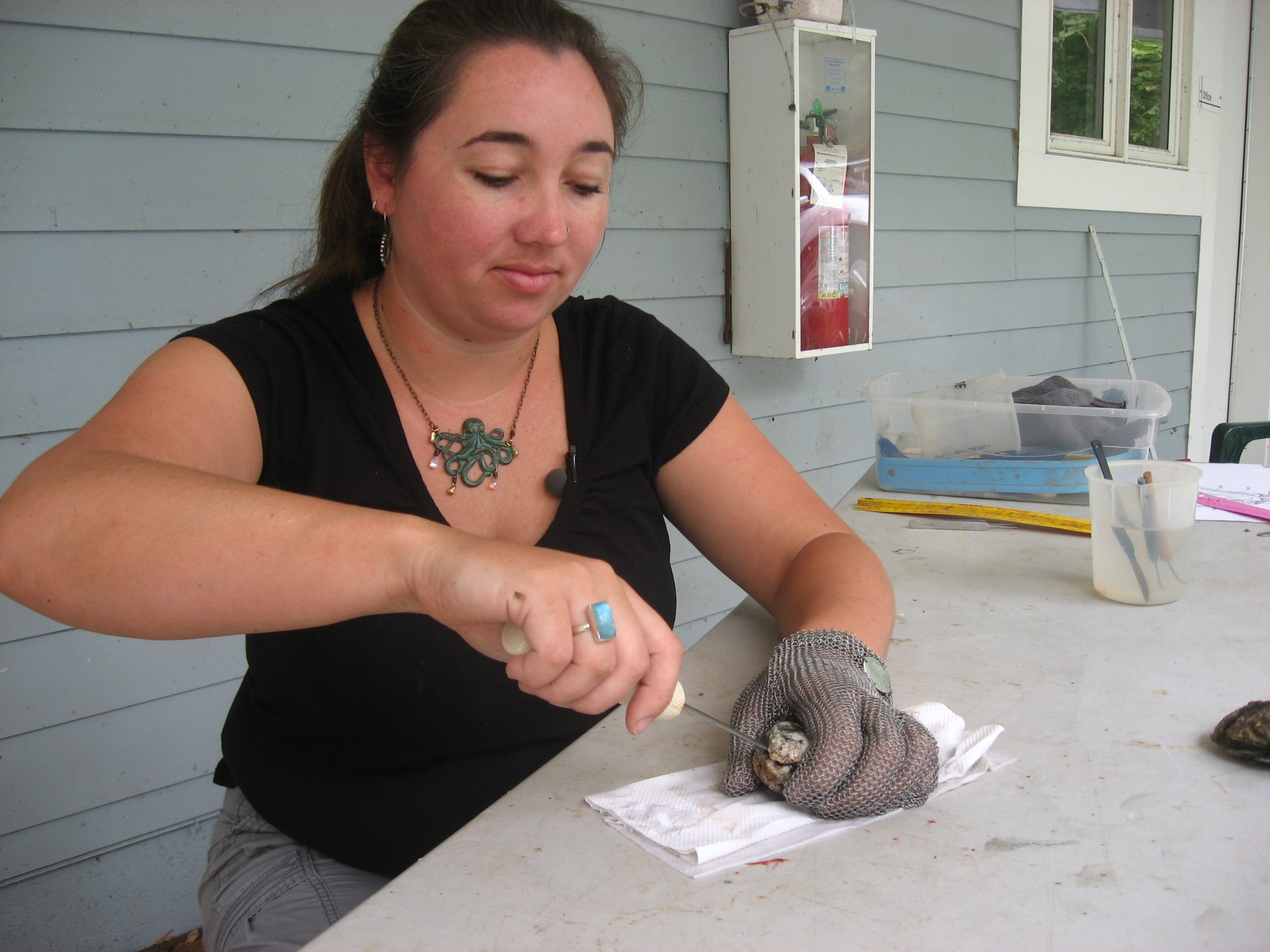by Kristen Minogue

Andrew Keppel (Credit: Rebecca Burrell/SERC)
Baby oysters are a lot stronger than they look. Living mainly in shallow coastal waters, where oxygen plummets and acidity spikes on a nightly basis, building a decent shell should be a challenge. But after a couple of weeks, young oysters are often able to adjust to the harsh conditions—and, sometimes, even grow more quickly to make up for lost time.
The discovery came from a team of marine ecologists at the Smithsonian Environmental Research Center (SERC), who published the new study in the journal PLOS ONE.
“It’s really impressive what these oysters are able to do in terms of acclimating to potentially harmful conditions,” said lead author Andrew Keppel, who worked on the project as a graduate student and later technician in SERC’s Marine Ecology Lab, before becoming an oceanography lab manager at the U.S. Naval Academy.
It’s a much-needed piece of good news for a shellfish whose plight has become almost legendary. Reefs of eastern oysters were once so abundant in Chesapeake Bay, the ships of early settlers had to navigate carefully to avoid running aground of them. But centuries of overfishing slashed their numbers to less than 1 percent of precolonial levels. Then in the mid-20th century, the diseases MSX and Dermo took their toll. Today, excessive nutrient pollution from the coast is intensifying rapid day-night cycles of low oxygen (a.k.a. diel-cycling hypoxia) and high acidity in the shallow waters where most oysters now live. All things considered, it seems the odds are forever not in their favor.
And yet, at least as juveniles, they’ve proven surprisingly resilient.
Keppel, with fellow technician Rebecca Burrell and SERC senior scientist Denise Breitburg, ran the study for four years. Their research base was a laboratory called the Room of DOOM (for “Dissolved Oxygen Oyster Mortality”), with dozens of aquaria designed to mimic the Bay’s day-night cycles of oxygen and acidity. The team placed one- to four-week-old baby oysters inside the aquaria and watched how quickly their shells grew in normal water and in various combinations of constant low oxygen, cycling low oxygen and cycling acidity.

In the Room of DOOM, scientists tweak the chemistry of aquarium waters to simulate the day-night swings of oxygen and acidity that oysters experience in shallow Bay waters. (Credit: SERC)
In all four years, oyster growth slowed down during the first two weeks oysters experienced one or more of the harsher conditions (usually low oxygen). But after an initial “adjustment phase,” something changed. The growth rate evened out. Some of the oysters even began growing more quickly than their counterparts in normal waters. While they didn’t manage to grow as large as normally-grown oysters during the course of the experiments, they showed signs of catching up.
“Where we did see a negative effect, it was only for the first couple weeks of the experiment, and then after that they grew just fine,” Breitburg said. “To me that’s a remarkable tolerance to what you might expect would be a pretty stressful environment.” The only exception, she noted, was when oxygen remained low constantly, rather than cycling from low to high—and even then, some of the oysters were able to adjust.

SERC senior scientist Denise Breitburg (Credit: Tina Tennessen/SERC)
The team made an even more incredible discovery when they put some of those oysters out in the Rhode River for nine months. There, oysters previously exposed to harsher conditions were able to bounce back, outpacing the normally-grown oysters. By the end of that experiment, all the oysters were more or less the same size.
How are the oysters doing it? That, according, to Keppel and Breitburg, is still a mystery. When oxygen drops to near zero, oysters might increase their gill size to get more oxygen. Since oysters use their gills for breathing and feeding, “a byproduct of growing bigger gills to get more oxygen is that you may also get more food,” Breitburg said. “That’s pure speculation, but that’s possible.”
The other great mystery is whether they can do it as adults.

Head technician Rebecca Burrell (Credit: SERC).
“When they’re really small, they can focus their energy on growth,” Keppel said. As oysters grow into adults, they also expend energy on reproduction.
Seth Miller, a postdoctoral fellow in Breitburg’s lab, has already begun exploring this question in a new project. An earlier study in Breitburg’s lab detected some negative growth effects for 1-year-old oysters, but those oysters hadn’t been exposed to harsher conditions as juveniles. It’s possible that early conditioning could help them out.
Oysters still face an uphill battle. The day-night cycles of low oxygen and acidity make them more vulnerable to Dermo disease as adults, and could hurt reproduction. But managers looking for places to restore baby oysters can take heart.
“Areas that experience this kind of diel-cycling hypoxia may actually be perfectly suitable for growing oysters—at least for the young spat,” Breitburg said. “Once they’re a bit older, though, there may be some negative consequences in terms of growth, disease and reproduction. But at least as juveniles, they seem to have a pretty amazing ability to acclimate.”


I walked on our oyster bed as a child and noticed the stone crabs kept the oysters clean of barnacles. Also More Marine has dumped shells hoping to start on the more important grass beds. Their oysters died. They needed a firm substraight to keep out of the Mudd. They’re not meant to roll on the grass by wave action.